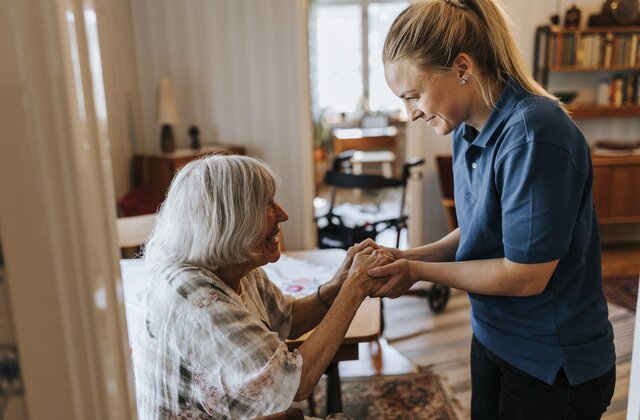As our loved ones age, ensuring their safety becomes a paramount concern. For active seniors, maintaining independence while staying safe is crucial. One vital aspect of senior safety is fall detection. With the help of modern technology, we can now monitor and prevent falls effectively. This article delves into the importance of fall detection for active seniors, exploring various technologies and strategies to enhance their safety.

Understanding Fall Detection
Fall detection is an innovative technology designed to identify falls in real-time. It employs sensors and algorithms to determine if a person has fallen and sends alerts to caregivers or emergency services. This technology is particularly beneficial for active seniors who wish to maintain their independence without compromising their safety.
Why Fall Detection Matters for Active Seniors
Active seniors are often engaged in various activities, from gardening to community events. However, their active lifestyles also increase the risk of falls. According to the National Institute on Aging, falls are a leading cause of injury among older adults. Fall detection technology can help mitigate this risk by providing immediate assistance in the event of a fall.
Key Features of Fall Detection Systems
Modern fall detection systems come with a variety of features designed to enhance senior safety:
1. Real-Time Alerts
These systems can send instant notifications to caregivers or emergency contacts, ensuring quick response times.
2. Automatic Fall Detection
Advanced sensors can distinguish between normal movements and falls, reducing false alarms and ensuring accuracy.
3. GPS Tracking
GPS-enabled devices provide location data, allowing caregivers to locate seniors quickly in case of an emergency.
4. Wearable Devices
Fall detection technology is often integrated into wearable devices like smartwatches, making it convenient for seniors to use.
Types of Fall Detection Technologies
There are several types of fall detection technologies available, each with its own advantages:
1. Wearable Devices
Wearable devices, such as smartwatches and pendants, are equipped with sensors that detect falls and send alerts.
2. In-Home Systems
These systems use sensors placed throughout the home to monitor movement and detect falls.
3. Smartphone Apps
Many apps are available that use a smartphone’s built-in sensors to detect falls and notify caregivers.
Choosing the Right Fall Detection System
Selecting the appropriate fall detection system involves considering several factors:
1. Ease of Use
Seniors should find the device easy to use and comfortable to wear.
2. Reliability
The system should provide accurate fall detection and minimal false alarms.
3. Cost
Consider the cost of the device and any associated subscription fees.
Benefits of Fall Detection for Active Seniors
The benefits of fall detection for active seniors are numerous:
1. Enhanced Safety
Immediate alerts ensure quick response times, reducing the risk of complications from falls.
2. Independence
Seniors can maintain their independence while feeling secure in their activities.
3. Peace of Mind
Family members and caregivers can have peace of mind knowing their loved ones are monitored and safe.
Integrating Fall Detection with Other Technologies
Fall detection technology can be integrated with other smart home devices for comprehensive senior safety:
1. Smart Home Integration
Devices like smart lights and voice assistants can enhance safety and connectivity for seniors.
2. Health Monitoring
Some fall detection systems also monitor vital signs, providing a complete health overview.
Overcoming Challenges in Fall Detection
While fall detection technology offers numerous benefits, there are challenges to address:
1. False Alarms
Improving accuracy to reduce false alarms remains a priority for developers.
2. Acceptance by Seniors
Seniors may be hesitant to adopt new technology, requiring education and reassurance.
Conclusion
Ensuring the safety of our loved ones is essential, and fall detection for active seniors plays a vital role in achieving this goal. By embracing technology, we can provide a safer and more independent life for our seniors. As the landscape of senior care continues to evolve, staying informed about the latest advancements is crucial. For more insights on privacy-friendly solutions and smart elderly care, visit privacy-friendly solutions and smart elderly care.

FAQ
1. How does fall detection technology work?
Fall detection technology uses sensors to detect sudden movements or lack of movement, indicating a fall. It then sends alerts to designated contacts.
2. Are fall detection devices covered by insurance?
Coverage varies by insurance provider. It’s best to check with your provider to determine if fall detection devices are covered.
3. Can fall detection technology be used outdoors?
Yes, many wearable fall detection devices are designed for use both indoors and outdoors, providing comprehensive coverage.
This article contains affiliate links. We may earn a commission at no extra cost to you.






